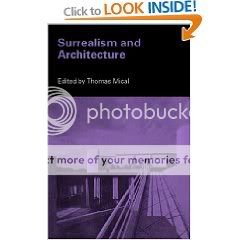
Product Description
Surrealism and Architecture examines a long overlooked topic: the relationship of surrealist thought to architectural theory and practice. This is a historically informed examination of architecture’s perceived absence in surrealist thought, surrealist tendencies in the theories and projects of modern architecture and the place of surrealist thought in contemporary design methods and theories.
This book represents the most current insights into the historical and contemporary relationships of surrealism in the thought and practice of modern architecture. Of all the artistic modernism affecting the design of buildings and cities, only surrealism has remained unexplored, yet the surrealist critiques of rationalism, orthodoxy, and the spatial production of meaning have a place in the history of modernism. In the 20 essays, the role of the subconscious, the techniques of defamiliarization, aesthetic and social forces affecting the objects, interiors, cities and landscapes of the 20th century arerevealed in the works of Breton, Dali, Aragon, Le Corbusier, Neimeyer, Kiefer, Hejduk, Tschumi, and others ranging across the history of modern art and architecture. The book contains a diversity of voices, methodologies, and insights to bring into sharp focus what is often suppressed in the histories of the modernist avant-garde. This comprehensive collection examines the theoretical, visual, and spatial practices of writers, artists, architects, and urbanists with particular emphasis on the critique of the everyday world-view, offering alternative models of subjectivity, artistic effect, and the production of meanings in the built world.
With the renewed interest in the surrealist movement, this timely collection of illustrated essays is the first to look at the architectural possibilities of this distinct modern artistic movement which was interdisciplinary and international. This book offers a model for a new approach to historically rigorous analysis of interdisciplinary artistic practice. It will be of interest to scholars in the histories of modernism, students and practitioners of art and architecture, cultural studies, and urban studies.